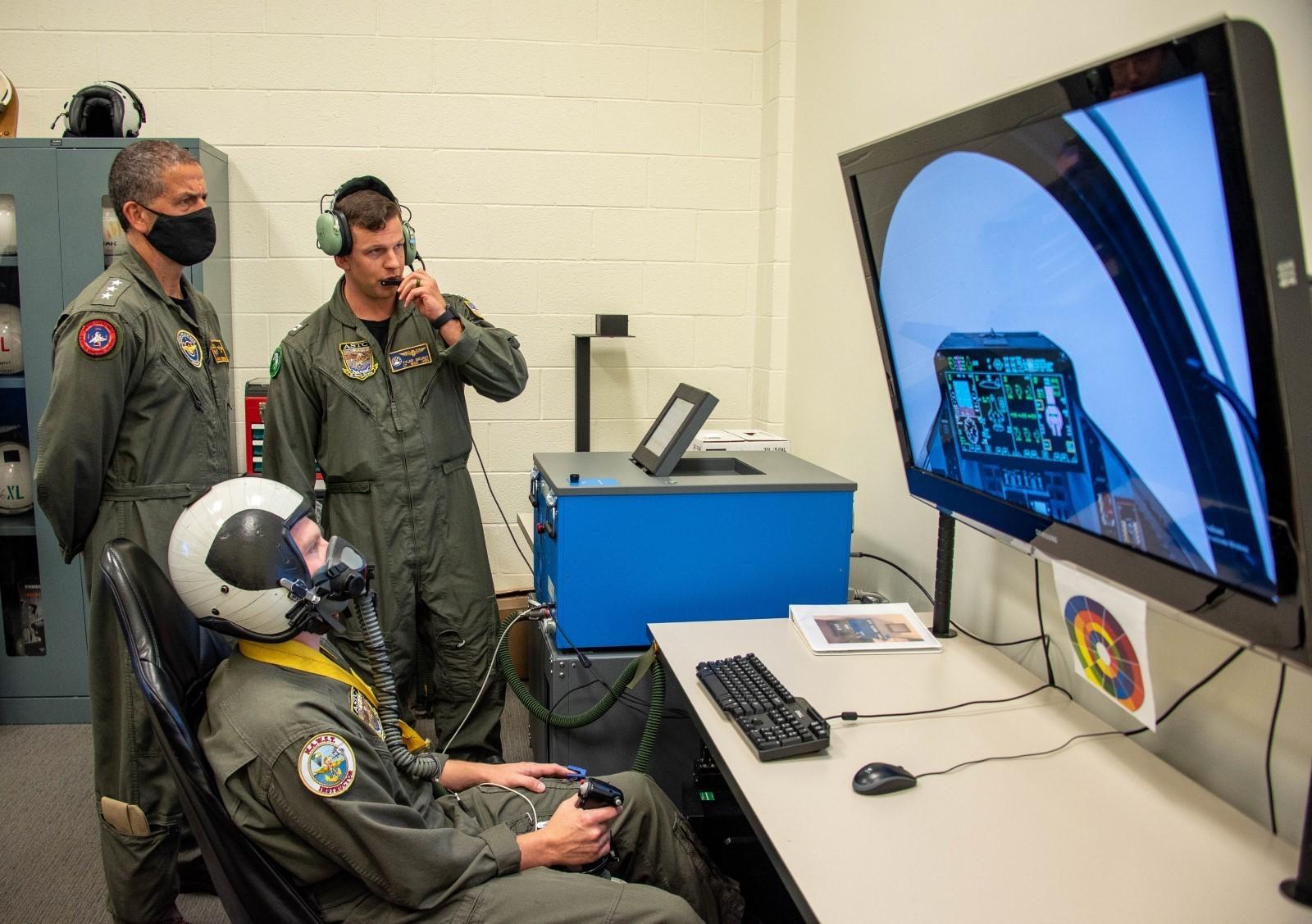
The Naval Aviation Training Systems and Ranges (NASTP) program office (PMA-205) recently installed and demonstrated the new Mask on Breathing Device (MOBD) trainer. The MOBD trainer simulates unique breathing-related distress symptoms that tactical jet aviators may experience during flight. These distress symptoms could potentially lead to Physiological Episodes (PE), a major safety concern for the Navy.
NASTP developed the MOBD trainer to replace and improve upon the legacy Reduced Oxygen Breathing Device – which only simulated hypoxia-like symptoms. The new trainer produces nitrogen-rich air from the ambient environment, eliminating the logistical and financial burden of using the compressed gas cylinders that were required by the legacy system. The on-demand airflow system removes the problems of unintentional symptoms caused by constant airflow, and is consistent with the On-Board Oxygen Generating System found in tactical aircraft. NASTP worked with the Office of Naval Research and the Naval Medical Research Center to ensure that the device allows aircrew trainees to experience three breathing distress profiles:
- hypoxia – low levels of oxygen in the body tissue;
- Hyperventilation – rapid or deep breathing, usually caused by anxiety or panic; and
- air hunger – a sensation of not being able to breathe in sufficient air.
“This groundbreaking training device enables naval aviators to recognize how they personally respond to breathing distress and allows them time to execute emergency procedures prior to becoming incapacitated,” said PMA-205 program manager, Capt. Lisa Sullivan. .
A total of 35 trainers will be installed in all eight Aviation Survival Training Centers across the US by November of 2022.
